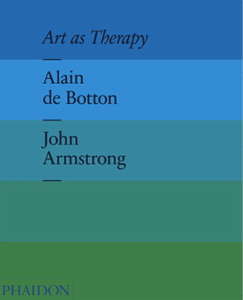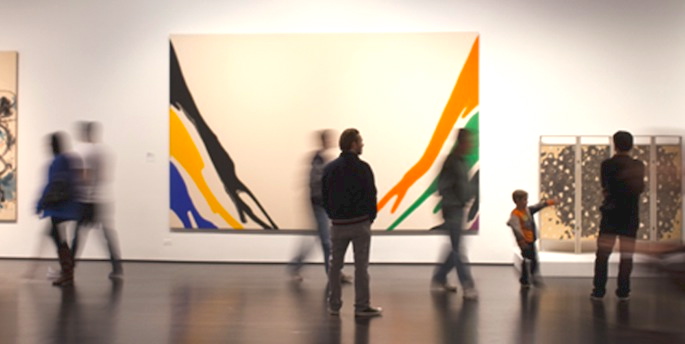In my childhood, I spent many afternoons at the Los Angeles County Museum of Art. My father loved the exhibition pavilions there, and to keep me occupied and not bored when I was too small to understand intellectually what I was viewing, my parents gave me a sketchpad and crayons or colored pencils and I would sit and draw. At first I only drew stick figures and didn’t relate to the art I was seeing. But one day, when I was perhaps about five, I looked up and saw something amazing—a woman with many faces. I was captivated. I had to draw her. This woman was one of Picasso’s masterpieces. My copy of this painting is still with all my early drawings and writings my mother kept, and to this day I believe it is a very good Picasso reproduction.


Still, I never quite understood what I was seeing when I would walk from gallery to gallery with my parents, my mother tired and wanting to go to the gift shop, my father transfixed by a sculpture, a painting, a vase, saying, “Look at this—isn’t this a masterpiece?” We would nod, but as I grew older and could put my feeling into words, I started wondering: How does one look at art, and what is it that art is supposed to do for us? Later I shortened the question: Is there a purpose to art? In the book Art as Therapy (Phaidon Press, 2013), philosopher Alain de Botton and art historian John Armstrong take up this very question and offer us not only a possible purpose for art but also a way for us to rewire how art is presented and experienced.
The book argues that instead of the more academic way we are used to viewing and thinking about art—in which what we look at is curated by art historians and divided by the style, century, country, or artist and thought about in an intellectual way—there is another way to look at art that could deeply transform our lives. The authors propose that art can be viewed therapeutically—that instead of using these usual divisions, we can view art as a way of deepening or coming to terms with the numerous life difficulties and milestones we all face and experience. Art could then have a profound purpose, they suggest—the purpose of healing.
In the book—which is a breathtaking art object itself, designed as a coffee-table book filled with photographs of major works of art and architecture for us to meditate on—de Botton and Armstrong put forth seven therapeutic areas in which art can be curated and viewed: remembering, hope, sorrow, rebalancing, self-understanding, growth, and appreciation.
The authors suggest that our experience of art can be one of deep reflection and a kind of communication with the artist about a particular feeling or difficult life challenge, and the book offers wonderful examples: When we think of aging, we can look at Jan Gossaert’s An Elderly Couple, painted in 1520, as a way of considering the autumn of our lives. Or when thinking about the unexpected difficulties life often throws at us, we could revel in Judith Kerr’s illustration from The Tiger Who Came to Tea, published in 1968, so we can learn how to not panic when the unexpected occurs.
I started to think of some of my own examples: If I am feeling lonely, I could look at various paintings of Van Gogh and see how he transforms loneliness into something that is almost spiritual. Or if I am feeling overwhelmed and that life is too busy and noisy, I can look at a photo of the famous Ryoan-ji Zen Garden in Kyoto and learn how it is possible to be quiet, even in the middle of a busy city.
Until museums and galleries start curating exhibitions in the way that de Botton and Armstrong suggest, here are three ways to rewire how we interact with art:
1. Enjoy a therapeutic museum or gallery afternoon. With pen and notebook, take a walk through a local museum looking for works of art that seem to reflect what you are feeling right now. At each one you find, sit and quietly spend time with it: its colors, its emotions, what the artist might be trying evoke or capture. Write what you see and what you feel the work of art is saying to you about your current feelings. Take a moment after you are done writing to just sit again with the work of art. Perhaps silently thank the artist for his or her understanding. Then go on to find a few more works that speak to your current frame of mind.
2. Do an Internet art recharge. On a day that you can’t go to a gallery or museum to view art therapeutically, take a short break from work or family obligations to look for two or three works of art on the Internet. Visit the websites of some of the world’s great museums and galleries, or go to individual artists’ sites. You can also find photographs on sites devoted to nature or travel. Take some time with each image and relate it to what you are feeling or to a current life issue, and see what that image says to you. Keep an online journal of all your images so you can revisit them at other times when you need to recharge.
3. Take a snapshot moment: Art is everywhere! Sometimes we need to process our feelings and rejuvenate ourselves, but we don’t have time or are not in the right place to visit a museum or even surf the Internet for therapeutic images. This is the perfect opportunity to realize that we can find art all around us. Our offices and homes have been designed by architects; our backyards or the view out our windows are potential photographs. Everything around us has a shape, a form, a color, a tone. Take a moment to look at what is right in front of you as a work of art—the library clock on the wall that is ticking and makes you feel for a moment that you are in a past century, the bold colors at the fast-food restaurant where you are standing in line for a sandwich, the sharp angles of the receptionist’s desk at the dentist’s office. Make a mental note of the image and notice whether the act of observing or appreciating it alters your mood or frame of mind. Take a snapshot with your mobile phone in case you want a reminder of the experience.
Now go forth and curate!




4 Comments
Yves
Hi, what is the name of the painting? Loved it when I went to the LACMA!
Victoria Rotante
Good morning,
Unfortunately I we don’t know the name of the artwork- but I agree it’s lovely!
We purchased the image from iStock photo.
Have a wonderful weekend!
Vickie